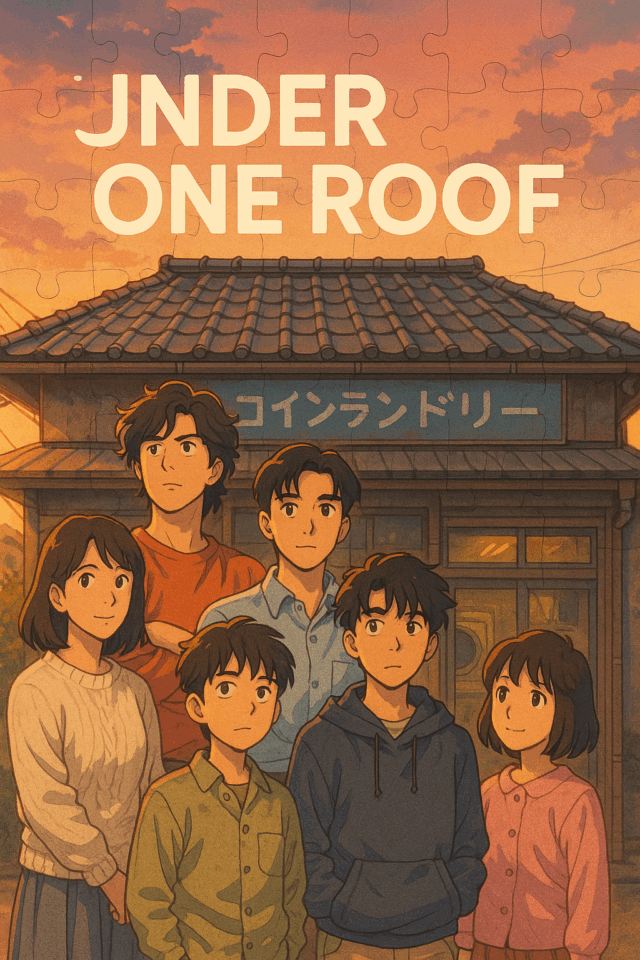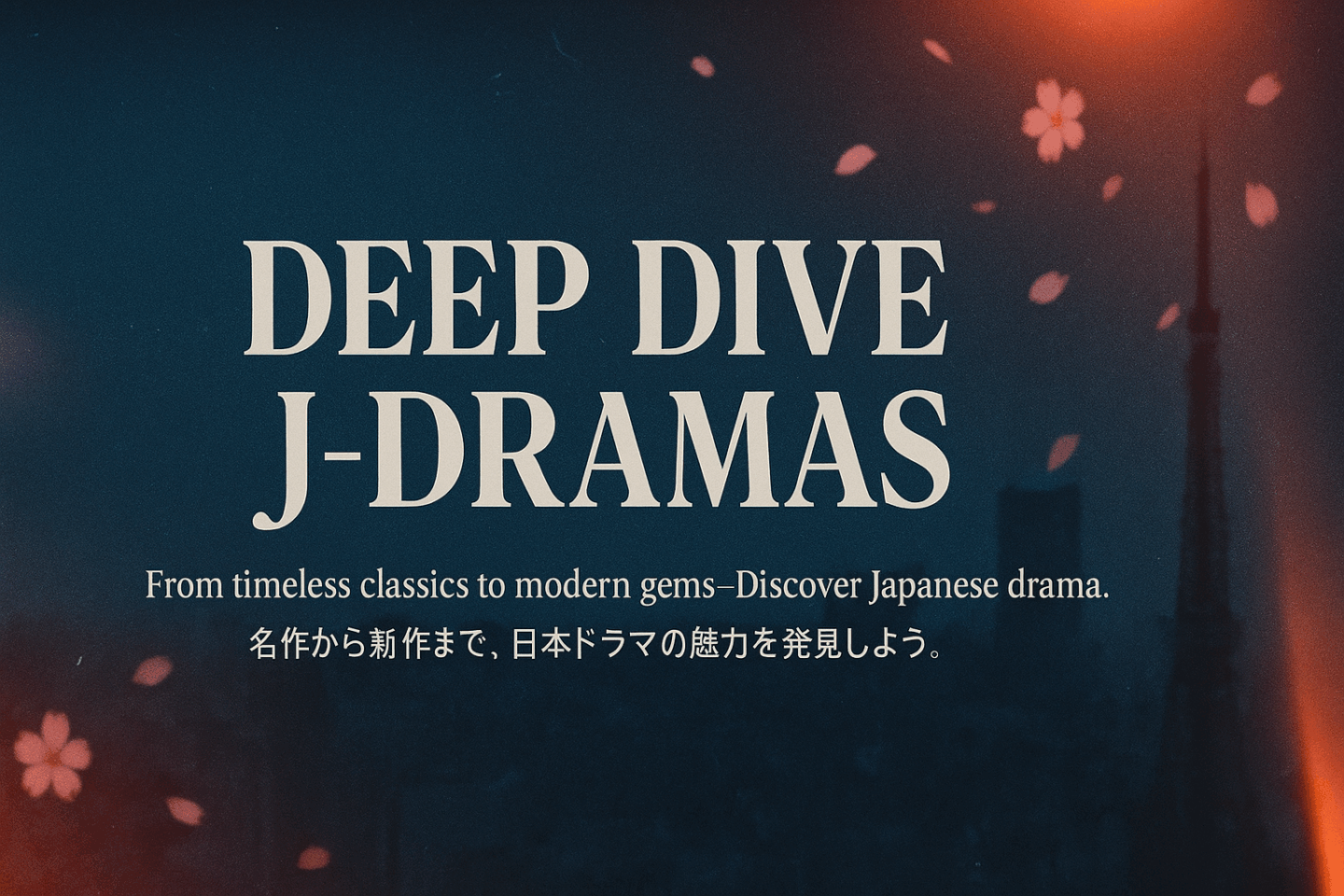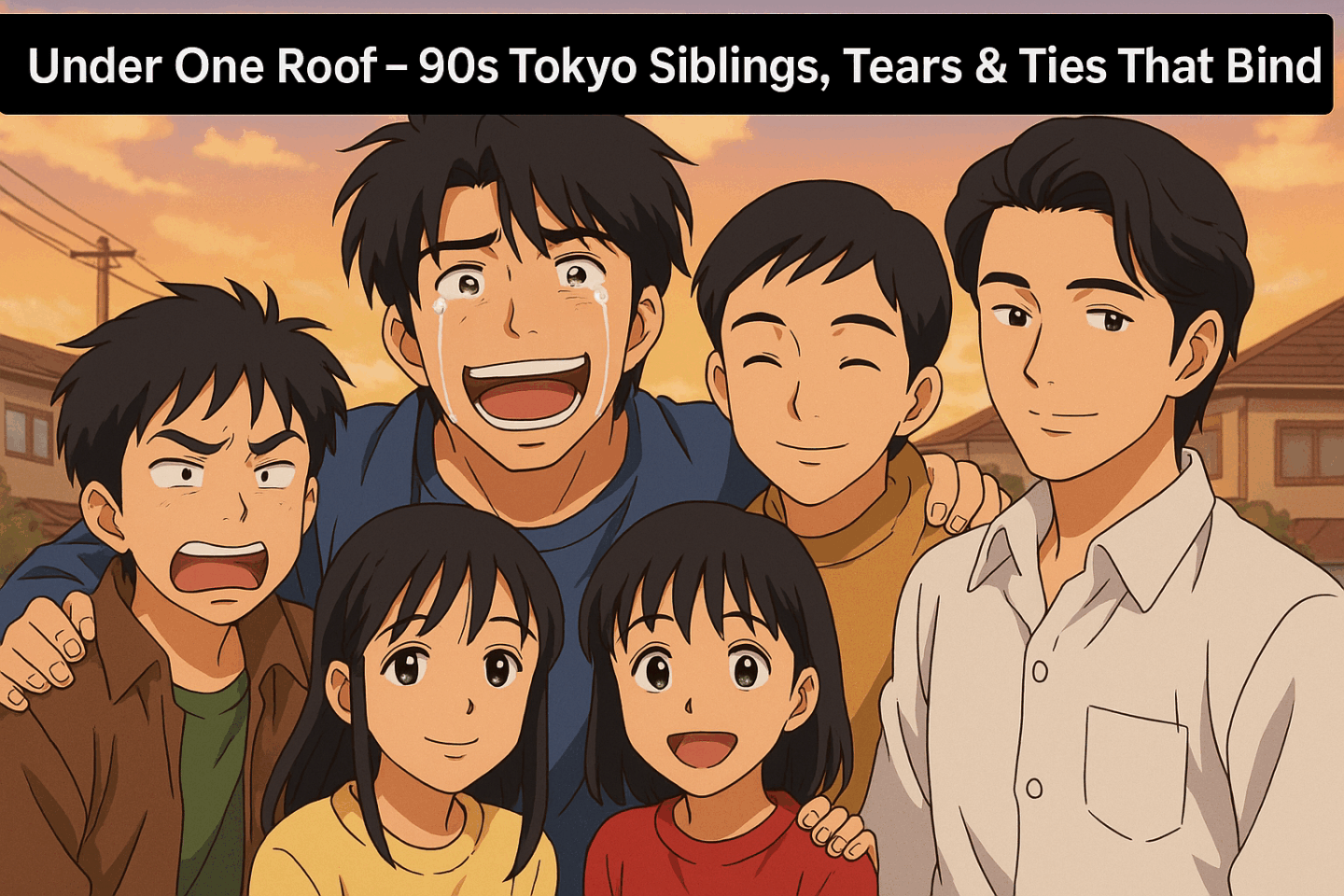📺 Overview
| Title | Under One Roof (ひとつ屋根の下) |
| Genre | Family / Coming-of-Age / Slice of Life |
| Originally Aired | Apr 12 – Jun 28 1993 (Fuji TV “Getsuku” Monday-9 p.m. slot) |
| Screenwriter | Shinji Nojima (101st Proposal, High School Teacher) |
| Directors | Kōzō Nagayama, Issei Nakae, Hideki Takeuchi, Masataka Takamaru |
| Starring | Yōsuke Eguchi, Masaharu Fukuyama, Noriko Sakai, Issei Ishida, Emi Ōji, Kōji Yamamoto |
| Theme Song | “Cactus Flower” by Kazuo Taitsū (Japanese 70s folk legend) |
| Average Rating | 28 % (Peak 37.8 %)—one of the 90 s’ biggest hits |

🕰️ The Plot (No Major Spoilers)
Seven years after their parents’ fatal accident, the six Kashiwagi siblings—now scattered across Tokyo—are summoned home by eldest brother Tatsuya (“An-chan”). Crashing under the same leaky roof of the family’s tiny laundrette, they juggle poverty, romance, disability and crime while rediscovering what “family” really means. Tatsuya’s rallying cry—“Is there love there?!”—became a 90s catch-phrase across Japan.
🌏 海外の視聴者が「Under One Roof」を愛する理由
- Real-world social issues: sexual-assault trauma, juvenile crime, physical disability—handled with raw honesty unusual for 90s TV.
- アイコンになる前のスターパワー:ロックスターから俳優に転身した福山雅治とティーンアイドルの酒井法子のブレイクの瞬間をご覧ください。
- “Getsuku” formula at its peak: the famous Monday-night slot that shaped Japanese pop-culture.
- Universal sibling dynamics—bickering, protecting, sacrificing—transcend language.
🧐 Cultural Keyword Cheat-Sheet
| Term | Quick Explanation |
|---|---|
| Getsuku | Fuji TV’s Monday-9 p.m. slot, comparable to the old NBC “Must See TV.” Landing here signaled top-tier prestige. |
| An-chan | Casual way to say “big bro” in Tokyo dialect—expect to hear it a lot. |
| Koindorii | Katakana on the set’s sign = “coin-laundry.” In Japan, many small family businesses still run neighborhood laundromats. |
| Kazuo Taitsū | Singer-songwriter whose 1975 hit was remade for the drama, giving older Japanese fans instant nostalgia. |
❓ Culture-Gap Moment
“Wait… the second brother has a crush on his adoptive sister—why isn’t that taboo?”
In Japan the law forbids marriage between legal siblings, adopted or not, but TV melodramas sometimes flirt with “forbidden love” for tension. The series uses it to highlight longing and guilt rather than approval; viewers in Japan saw it as daring but not unheard-of in 90s fiction. Mention it in your watch-party and you’ll spark a great East-vs-West ethics debate!
🗺️ Pilgrimage-Worthy Filming Spots
| Location | Scene | Travel Tip |
|---|---|---|
| Shimokitazawa, Tokyo | Kashiwagi laundrette exterior | Hip vintage-shop district—grab thrift clothes after photos. |
| Setagaya Ward back streets | Tatsuya’s midnight bicycle rides | Plenty of retro kissaten cafés still survive. |
| Odaiba Seaside Park | Siblings’ fireworks scene | Visit at dusk for Rainbow Bridge views. |
| Fujisawa City ⇄ Enoshima | Beach healing trip | Same coast used in Slam Dunk anime—double-fandom points. |
🎬 Where to Watch
Under One Roof is not on global Netflix (as of June 2025).
- Japan: stream on FOD Premium (Fuji TV’s own platform).
- Elsewhere: look for the Region 2 DVD box or check Crunchyroll’s live-action sub-label—licensing talks have been rumored.
Tip: a VPN into Japan plus FOD’s 14-day free trial works if you have a Japanese payment method.
✍️ Final Verdict
If you loved the tear-jerking family bonds of This Is Us but crave 90s Tokyo vibes and a rock-ballad soundtrack, Under One Roof is your next binge. Keep tissues ready—and be prepared to shout “Is there love?!” at your own siblings.
Happy streaming, and let us know which Japanese drama you’d like decoded next!



